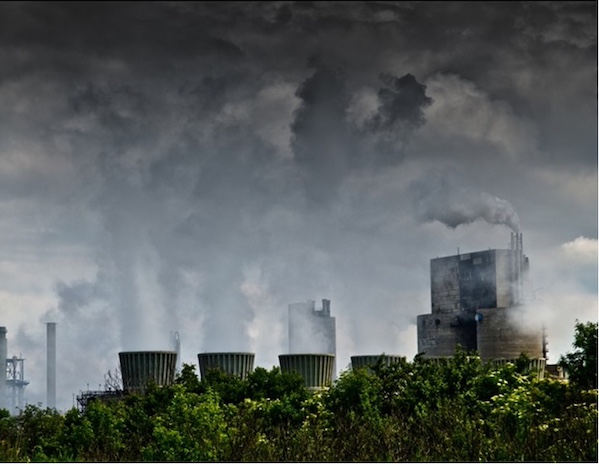Air pollution linked to increased breast cancer risk in women
October 19, 2023
Source: drugdu
 435
435

Women living and working in places with higher levels of fine particle air pollution are more likely to get breast cancer than those living and working in less polluted areas. Results of the first study to take account of the effects of both residential and workplace exposure to air pollution on breast cancer risk are presented at the ESMO Congress 2023 in Madrid, Spain.
Professor Béatrice Fervers, Head of Prevention Cancer Environment Department, Léon Bérard Comprehensive Cancer Centre, France, said, "Our data showed a statistically significant association between long term exposure to fine particle air pollution, at home and at work, and risk of breast cancer. This contrasts with previous research which looked only at fine particle exposure where women were living, and showed small or no effects on breast cancer risk."
In the study, home and workplace exposure to pollution in 2419 women with breast cancer was compared to that in 2984 women without breast cancer over the period 1990-2011. The results showed that breast cancer risk increased by 28% when exposure to fine particle (PM2.5) air pollution increased by 10 µg/m3 – approximately equivalent to the difference
inPM2.5 particle concentration typically seen in rural versus urban areas of Europe. Smaller increases in breast cancer risk were also recorded in women exposed to high levels of larger particle air pollution (PM10 and nitrogen dioxide). Fervers and colleagues now plan to investigate the effects of pollution exposure during commuting to get a complete picture of effects on breast cancer risk.
Professor Charles Swanton, the Francis Crick Institute, London, UK, whose research suggesting how PM2.5 particles may trigger lung cancer in non-smokers was presented at ESMO Congress 2022 (2), stressed the importance of the new findings with breast cancer.
"These very small particles can penetrate deep into the lung and get into the bloodstream from where they are absorbed into breast and other tissues. There is already evidence that air pollutants can change the architecture of the breast. It will be important to test if pollutants allow cells in breast tissue with pre-existing mutations to expand and drive tumor promotion possibly through inflammatory processes, similar to our observations in non-smokers with lung cancer," he said. "It is very concerning that small pollutant particles in the air and indeed microplastic particles of similar size are getting into the environment when we don't yet understand their potential to promote cancer. There is an urgent need to set up laboratory studies to investigate the effects of these small air pollutant particles on the latency, grade, aggression and progression of breast tumors," he added.
"There is now strong epidemiological and biological evidence for the link between PM2.5 particle exposure and cancer, and there are good clinical and economic reasons for reducing pollution in order to prevent cancers," said Professor Jean-Yves Blay, ESMO Director of Public Policy.
Following on a proposal from the European Commission in October 2022 to reduce the limit for PM2.5 particles in the air from the current 25 µg/m3 to 10 µg/m3 by 2030, ESMO urged a reduction in the PM2.5 limit still further to 5 µg/m3, in line with the World Health Organisation's air quality guidance (5). "Reducing PM2.5 particles in the air to the WHO recommended level is critical because of their association with a variety of tumor types, including breast cancer," Blay added. "We have a responsibility to push for this change, not only for people in Europe but worldwide where there are big variations in the pollution landscape." The lower limit was indeed adopted by the European Parliament's Environment, Public Health and Food Safety Committee in June 2023.
More recently, in September 2023, the European Parliament adopted in plenary session its report on the ongoing revision of the EU Ambient Air Quality Directives, which reflects ESMO's recommendations to set the annual limit value for Fine Particulate Matter (PM2.5) at 5 µg/m³. This adoption opens interinstitutional negotiations between the co-legislators – European Parliament, European Commission and EU Council – to agree on the final text of the directive.
"By supporting our requests with solid scientific evidence, we are offering a new dimension to health public policy. The work is not over, and change will not happen overnight, but we are moving in the right direction," the ESMO Public Policy Director concluded.
Source:
https://www.news-medical.net/news/20231017/Air-pollution-linked-to-increased-breast-cancer-risk-in-women.aspx
Read more on
- Multiple batches of quadrivalent influenza virus split vaccine have been sub-packaged and submitted for lot release approval; expected to be released to the market soon after approval December 12, 2025
- Ab&B Bio-Tech CO., LTD. JS Lyophilized Human Rabies Vaccine Initiates Phase III Clinical Trials December 12, 2025
- The ‘Sweetest’ HPV Vaccine Market is Gone | Haibin Interview December 12, 2025
- InnoCare Pharma announced that its first independently developed next-generation TRK inhibitor, zoletrazinib, has been approved for marketing in China December 12, 2025
- Is PD-1/VEGF dual antibody + ADC becoming the standard configuration? December 12, 2025
your submission has already been received.
OK
Subscribe
Please enter a valid Email address!
Submit
The most relevant industry news & insight will be sent to you every two weeks.



